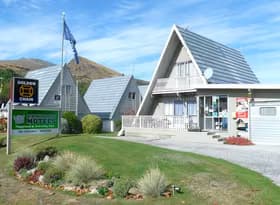Earlier this month we introduced the New Zealand Index of Socioeconomic Deprivation (NZDep) to the Regional Economic Profile Census section. NZDep is a powerful measure for understanding and comparing socioeconomic deprivation across small and large areas, and is used widely in government funding formulas, social services, and health research. In this article we discuss NZDep and what it can tell us about our communities.
What is socioeconomic deprivation and NZDep
Put simply, socioeconomic deprivation means a lack of the things that many of us take for granted for living in today’s society – a lack of material and social resources. Areas with more people who are lacking these things, are classed in a higher, or more deprived decile. The University of Otago produces the New Zealand Index of Socioeconomic Deprivation (NZDep) which is a widely used measure of relative socioeconomic deprivation, based on Census data.
NZDep classifies small areas in New Zealand into one of ten deciles, based on a combination of these nine indicators:
- Communication: People with no access to the internet at home
- Income: People aged 18 – 64 receiving a main means tested benefit
- Income: People living in equivalised households with income below an income threshold
- Employment: People aged 18 – 64 unemployed
- Qualifications: People aged 18 – 64 without any qualifications
- Owned home: People not living in own home
- Support: People aged < 75 living in a sole-parent family
- Living space: People living in equivalised households below a bedroom occupancy threshold (i.e. overcrowded)
- Living condition: People living in dwellings that are always damp and/or always have mould greater than A4 size
Unusually for local-level data, NZDep includes distributional information. NZDep tells us about more than just averages; it tells us how many people are living in the most deprived areas, and how big the gap is between the ‘haves’ and ‘have nots’ in a community.
Wide range of deprivation across country, and within areas
The spread of deprivation across New Zealand is greatly uneven. Chart 1 shows that for six territorial authorities – Far North, South Waikato, Waitomo, Kawerau, Ōpōtiki, and Wairoa - more than half of their population lives in the most deprived areas – deciles 9 and 10. By contrast, more than half of the population of Selwyn and Queenstown-Lakes districts lives in the least deprived areas – deciles 1 and 2.
With the largest population, Auckland has the most even distribution – with roughly 20% of their population in each of the five groupings (quintiles) shown in Chart 1.
Average deprivation available – but use with care
Average deprivation can be a useful summary statistic for comparing deprivation across and within areas. However, average deprivation should be used with care as it does risk ignoring the experience of highly deprived areas and communities with a wide mix of deprivation levels. Porirua City is a good example of why care is needed. Porirua’s average deprivation score in 2023 was 5.3 – nearly the same as the national average of 5.6. Based on this average score alone, one might conclude that Porirua faces no specific challenges around deprivation.
However, Chart 2 shows that 33% of the city’s population lives in the most deprived areas – deciles 9 and 10 – compared to 21% nationally. Not only that, 37% of Porirua’s population lives in the least deprived areas – deciles 1 and 2 – compared to 20% nationally. Only 8% of Porirua’s population lives in deciles 5 and 6, which includes the average score of 5.3.
Average deprivation does have its place, such as for comparing areas within a territorial authority. Across Porirua City’s 25 Statistical Area 2 (SA2) areas, the average deprivation score ranges from 1.1 to 10. Average deprivation could be useful for identifying which communities in Porirua face greater challenges around deprivation.
Check out your area
With the addition of NZDep to the Regional Economic Profile, you can look at the distribution of deprivation by decile, or across small areas. Have a look at deprivation for your area, and get in touch with our economists if you have any questions.






